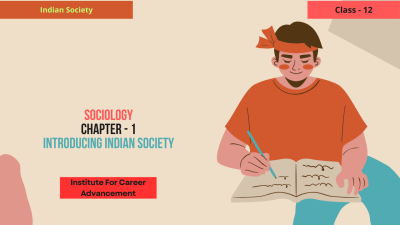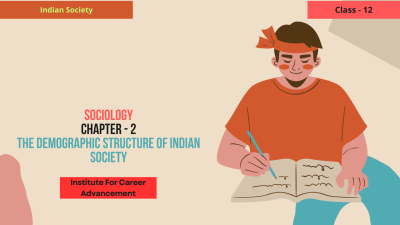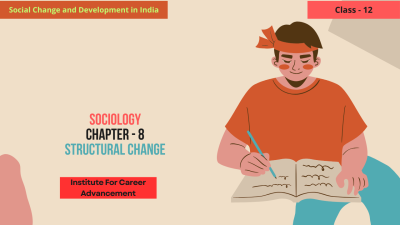Change and Development in Rural Society - Class 12
Change and Development in Rural Society is a Class 12 course that explores the dynamics of rural development in India. It examines the challenges faced by rural communities, the factors driving rural change, and the strategies for promoting sustainable rural development. Key Topics: Rural Development: The process of improving the quality of life of rural people through economic growth, social development, and environmental sustainability. Challenges of Rural Development: The various challenges faced by rural communities, including poverty, inequality, lack of infrastructure, and environmental degradation. Factors Driving Rural Change: The factors that influence rural development, such as globalization, technological advancements, government policies, and social movements. Rural-Urban Migration: The movement of people from rural to urban areas and its impact on rural communities. Sustainable Rural Development: Strategies for promoting sustainable development in rural areas, including agricultural modernization, rural industries, and social development programs. Learning Objectives: Understand the concept of rural development and its importance. Analyze the challenges faced by rural communities in India. Evaluate the factors driving rural change and their impact. Explore strategies for promoting sustainable rural development. Develop critical thinking and problem-solving skills related to rural development issues. Change and Development in Rural Society is a valuable course that provides students with a comprehensive understanding of the challenges and opportunities facing rural India. It equips them with the knowledge and skills necessary to contribute to the development of rural communities and promote social justice and equity. চেঞ্জ অ্যান্ড ডেভেলপমেন্ট ইন রুরাল সোসাইটি হল দ্বাদশ শ্রেণির একটি কোর্স যা ভারতে গ্রামীণ উন্নয়নের গতিশীলতার অন্বেষণ করে। এটি গ্রামীণ সম্প্রদায়ের সম্মুখীন হওয়া চ্যালেঞ্জ, গ্রামীণ পরিবর্তনের কারণ এবং টেকসই গ্রামীণ উন্নয়নের প্রচারের কৌশলগুলি পরীক্ষা করে। মূল বিষয়ঃ গ্রামীণ উন্নয়নঃ অর্থনৈতিক প্রবৃদ্ধি, সামাজিক উন্নয়ন এবং পরিবেশগত স্থায়িত্বের মাধ্যমে গ্রামীণ মানুষের জীবনযাত্রার মান উন্নয়নের প্রক্রিয়া। গ্রামীণ উন্নয়নের চ্যালেঞ্জঃ দারিদ্র্য, অসমতা, পরিকাঠামোর অভাব এবং পরিবেশগত অবক্ষয় সহ গ্রামীণ সম্প্রদায়ের বিভিন্ন চ্যালেঞ্জ। গ্রামীণ পরিবর্তনের চালিকাশক্তিঃ বিশ্বায়ন, প্রযুক্তিগত অগ্রগতি, সরকারি নীতি এবং সামাজিক আন্দোলনের মতো গ্রামীণ উন্নয়নকে প্রভাবিত করে এমন কারণগুলি। গ্রামীণ-শহুরে অভিবাসনঃ গ্রামীণ থেকে শহুরে অঞ্চলে মানুষের চলাচল এবং গ্রামীণ সম্প্রদায়ের উপর এর প্রভাব। টেকসই গ্রামীণ উন্নয়নঃ কৃষি আধুনিকীকরণ, গ্রামীণ শিল্প এবং সামাজিক উন্নয়ন কর্মসূচি সহ গ্রামাঞ্চলে টেকসই উন্নয়নের প্রচারের কৌশল। শিক্ষার উদ্দেশ্যঃ গ্রামীণ উন্নয়নের ধারণা এবং এর গুরুত্ব বোঝা। ভারতে গ্রামীণ সম্প্রদায়ের সম্মুখীন হওয়া চ্যালেঞ্জগুলি বিশ্লেষণ করুন। গ্রামীণ পরিবর্তনের কারণগুলি এবং সেগুলির প্রভাব মূল্যায়ন করুন। টেকসই গ্রামীণ উন্নয়নের জন্য কৌশলগুলি অন্বেষণ করুন। গ্রামীণ উন্নয়নের বিষয়গুলির সঙ্গে সম্পর্কিত সমালোচনামূলক চিন্তাভাবনা এবং সমস্যা সমাধানের দক্ষতার বিকাশ ঘটান। গ্রামীণ সমাজে পরিবর্তন ও উন্নয়ন একটি মূল্যবান কোর্স যা শিক্ষার্থীদের গ্রামীণ ভারতের চ্যালেঞ্জ এবং সুযোগগুলি সম্পর্কে ব্যাপক ধারণা প্রদান করে। এটি গ্রামীণ সম্প্রদায়ের উন্নয়নে অবদান রাখতে এবং সামাজিক ন্যায়বিচার ও সাম্যের প্রচারের জন্য প্রয়োজনীয় জ্ঞান ও দক্ষতার সাথে তাদের সজ্জিত করে।
English
Last updated
Wed, 27-Nov-2024



















